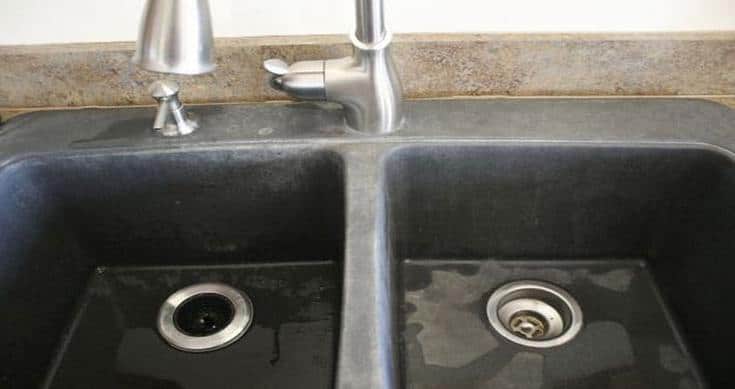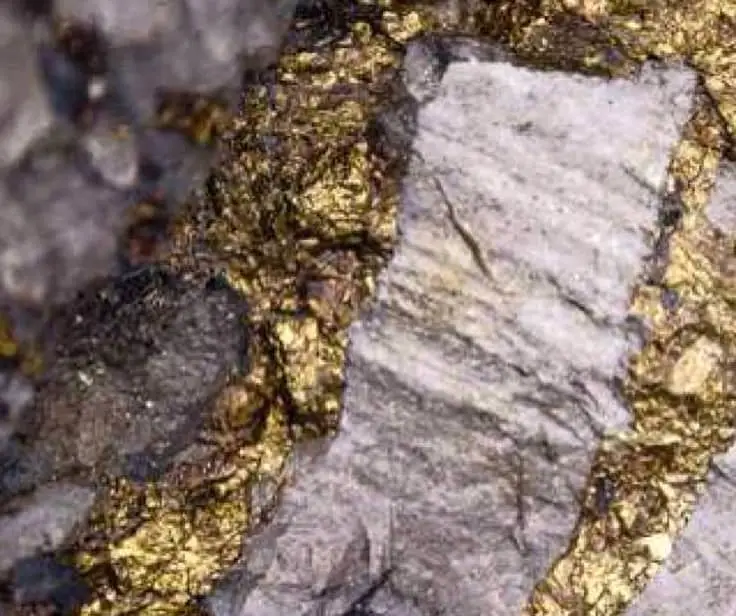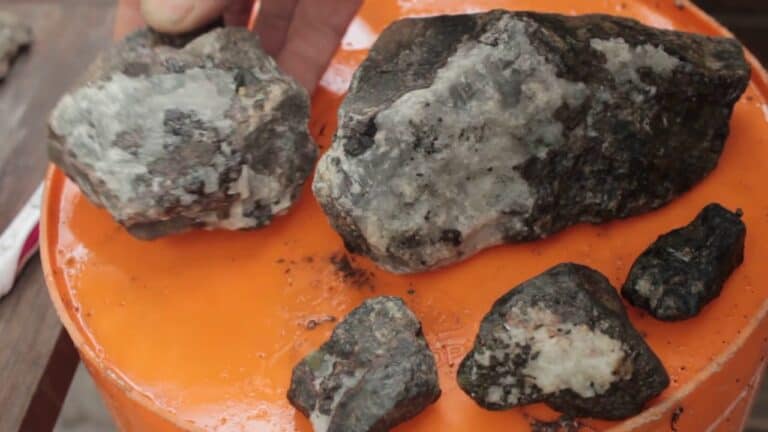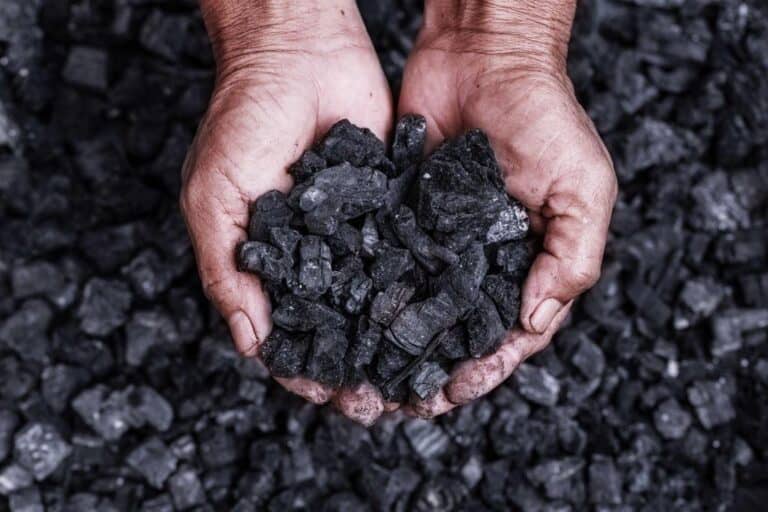Halite vs. Calcite: What Are the Differences?
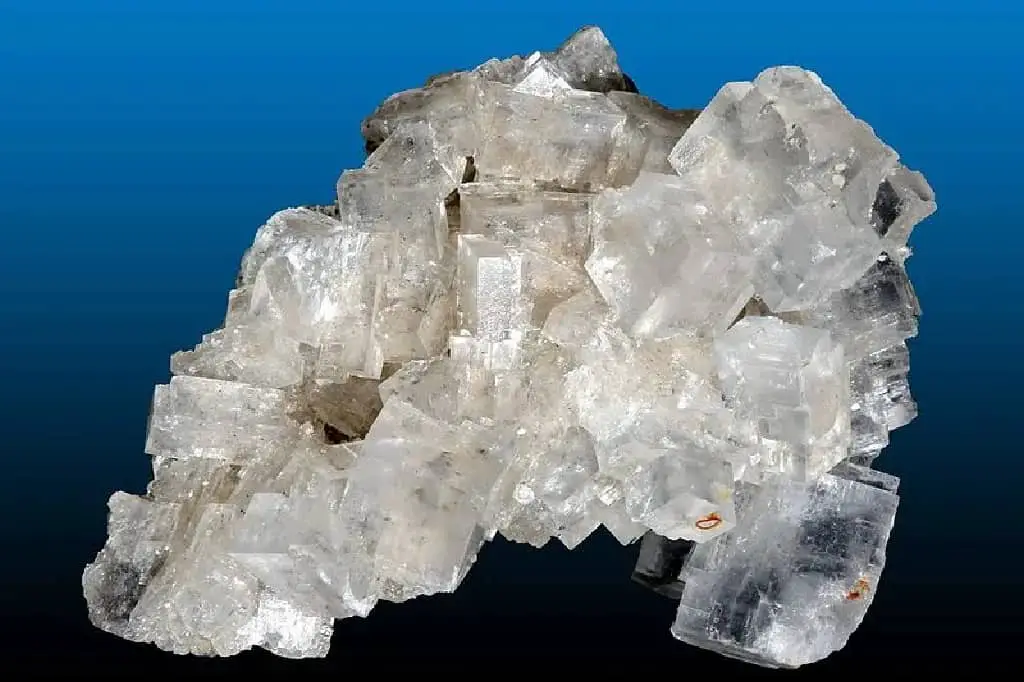
When it comes to minerals, there are a vast number of different types that exist. Some are commonly known, such as quartz, while others are more obscure, like stibnite. Two minerals that are often compared and contrasted are halite and calcite.
If you’ve ever seen a shiny white rock and wondered whether it was halite or calcite, you’re not alone. These two minerals are often confused due to their similar appearances, but they have distinct differences that set them apart.
In this article, we’ll explore the unique properties and uses of halite and calcite, from their chemical composition to their crystal structure and hardness. Whether you’re a geology enthusiast or simply curious about these fascinating minerals, this article will provide you with all the information you need to distinguish between halite and calcite. So, let’s dive in and discover what sets these two minerals apart!
Basics of Halite
Halite is a mineral that is also known as rock salt or sodium chloride. It is a common mineral that can be found in many parts of the world, especially in areas where there are large deposits of evaporite minerals. Halite is often found in sedimentary rocks, particularly in salt beds, salt domes, and salt pans.
The chemical formula for halite is NaCl, which means it is composed of sodium and chlorine atoms. Halite has a colorless or white appearance and can form cubic or octahedral crystals. Its crystal shape is due to its internal arrangement of atoms, which are in a pattern that repeats itself in three dimensions.
Halite has perfect cleavage, which means that it can be easily broken along specific planes. Its cleavage is so perfect that it can be used as a model for teaching about crystal structure. Additionally, halite is well known for being scratchable with a copper penny or a fingernail.
The formation of halite can occur in several ways. One of the most common ways is through the evaporation of seawater or brine. When water evaporates, it leaves behind minerals that were dissolved in it, including halite. As the minerals accumulate, they can form large deposits of halite.
Halite has many practical uses. It is commonly used as a de-icing agent to melt ice on roads and sidewalks during the winter months. It is also used as a food preservative and in the production of chemicals, such as chlorine and sodium hydroxide. Halite is also used in water softening processes to remove minerals that can cause hard water.
Despite its many uses, halite can also have negative environmental impacts. The mining of halite can cause soil erosion, groundwater contamination, and land subsidence. When halite is extracted from the ground, it can cause the land to sink, which can lead to structural damage to buildings and infrastructure. Halite mining can also release large amounts of brine into the environment, which can have negative impacts on aquatic ecosystems.
Basics of Calcite
Calcite is a common mineral that can be found in a variety of geological environments, including sedimentary, metamorphic, and igneous rocks. It is composed of calcium, carbon, and oxygen atoms and has a chemical formula of CaCO3. Calcite is often found in a wide range of colors, including white, gray, yellow, green, and blue.
Calcite is known for its distinctive crystal shape, which is rhombohedral. This means that its crystal has six sides and is angled at 120 degrees. The internal arrangement of atoms in calcite creates this unique shape. Calcite also has perfect rhombohedral cleavage, which means that it can be easily broken into rhombus-shaped pieces.
The formation of calcite can occur in a variety of ways. One common way is through the precipitation of calcium carbonate from water. This can happen in caves, where calcite can form stalactites and stalagmites over time. Calcite can also form in sedimentary rocks, where it can be a major component of limestone, a rock formed from the accumulation of ancient marine fossils.
Calcite has many practical uses. It is commonly used in construction materials, such as cement and concrete. Calcite is also used in agriculture as a soil conditioner to neutralize acidic soils and provide essential nutrients to plants. Additionally, calcite is used in glass production and optical equipment, such as lenses and prisms.
Despite its many uses, the mining and use of calcite can have negative environmental impacts. The mining of calcite can cause habitat destruction and soil erosion. When calcite is extracted from the ground, it can also release dust and other particles into the air, which can contribute to air pollution.
Physical Properties
Halite
Halite, also known as rock salt, is a mineral that is typically colorless or white, but it may also be shades of pink, red, or blue. It frequently appears in sedimentary rocks and distinguishes itself by having an eight-faced cubic or octahedral crystal shape.
Halite has perfect cubic cleavage, meaning it breaks along planes that are perpendicular to each other. It is a relatively soft mineral, with a hardness of 2.5 on the Mohs scale. Halite has a specific gravity of 2.1, meaning it is lighter than average rock.
Calcite
Calcite is a mineral that can be various colors, including white, yellow, orange, green, blue, and red. The color of calcite depends on the impurities present in the crystal. It is often found in sedimentary rocks, particularly in limestone and dolomite, and is characterized by its rhombohedral crystal shape, meaning it has six faces.
Calcite has perfect rhombohedral cleavage, meaning it breaks along planes that are not perpendicular. It is harder than halite, with a hardness of 3 on the Mohs scale. Calcite has a specific gravity of 2.7, making it denser than halite.
Comparison
In summary, halite is typically colorless or white with a cubic or octahedral crystal shape and perfect cubic cleavage. Calcite, on the other hand, can be various colors with a rhombohedral crystal shape and perfect rhombohedral cleavage. Calcite is harder and denser than halite.
Chemical Properties
Halite
Halite is composed of sodium (Na) and chlorine (Cl), which combine to form the chemical formula NaCl. It is highly soluble in water and not affected by acid.
Calcite
Calcite is composed of calcium (Ca), carbon (C), and oxygen (O), which combine to form the chemical formula CaCO3. It reacts with acid and effervesces, releasing carbon dioxide gas. Calcite is less soluble than halite, but it can still dissolve in acidic water.
Comparison
In conclusion, acid does not affect halite because it contains sodium and chlorine. Calcite is composed of calcium, carbon, and oxygen and reacts with acid. Calcite is less soluble than halite, but it can still dissolve in acidic water.
Occurrence and Formation
Halite
Halite is found in sedimentary rocks, often in association with gypsum, anhydrite, and other evaporite minerals. It is most commonly found in salt beds, salt domes, and salt pans. Halite forms when seawater evaporates or when saltwater lakes or inland seas dry up.
Calcite
Calcite is found in sedimentary rocks, particularly limestone and dolomite. It can also be found in metamorphic and igneous rocks. Calcite forms when calcium-rich water evaporates or when marine organisms secrete calcium carbonate.
Comparison
In summary, halite is found in salt beds, salt domes, and salt pans and forms when seawater evaporates or when saltwater lakes or inland seas dry up. Calcite is found in sedimentary, metamorphic, and igneous rocks and forms when calcium-rich water evaporates or when marine organisms secrete calcium carbonate.
Uses and Applications
Halite
Halite has a variety of uses, including:
- De-icing roads and sidewalks: Halite is commonly used to melt ice and snow on roads and sidewalks due to its low cost and effectiveness at low temperatures.
- Food preservation: Halite can be used to preserve food, such as meats and fish, by drawing out moisture and inhibiting bacterial growth.
- Chemical production: Halite is a source of chlorine and sodium, which are used in the production of various chemicals, including PVC and bleach.
- Water softening: Halite can be used to soften hard water by exchanging calcium and magnesium ions with sodium ions.
Calcite
Calcite also has several uses, including:
- Construction: Calcite is a common ingredient in cement, concrete, and asphalt.
- Agriculture: Calcite is used as a soil conditioner to increase the pH level of acidic soils and improve crop yields.
- Glass production: Calcite is used to make glass and is a component of many types of ceramics.
- Optical equipment: Calcite is used in polarizing microscopes and optical equipment due to its birefringence properties.
Comparison
In summary, halite is used for de-icing, food preservation, chemical production, and water softening, while calcite is used in construction, agriculture, glass production, and optical equipment.
Environmental Impact
Halite
Halite mining can have several environmental impacts, including:
- Soil erosion: The removal of halite from the ground can result in soil erosion, which can impact nearby vegetation and wildlife.
- Groundwater contamination: Halite mining can result in the contamination of groundwater with salt and other chemicals, which can be harmful to aquatic life and human health.
- Land subsidence: The removal of halite can cause land subsidence, which can result in sinkholes and other structural damage.
Calcite
Calcite mining can also have environmental impacts, including:
- Habitat destruction: The removal of calcite from the ground can result in habitat destruction for plant and animal species.
- Water pollution: The chemicals used in calcite mining can contaminate nearby water sources, impacting aquatic life and human health.
- Air pollution: The dust and particulate matter generated during calcite mining can result in air pollution, which can impact nearby communities.
Comparison
In summary, halite mining can result in soil erosion, groundwater contamination, and land subsidence, while calcite mining can cause habitat destruction, water pollution, and air pollution.
Halite vs. Calcite: The Differences in a Table
| Property | Halite | Calcite |
| Chemical formula | NaCl (sodium chloride) | CaCO3 (calcium carbonate) |
| Color | Colorless or white | Various colors |
| Crystal shape | Cubic or octahedral | Rhombohedral |
| Cleavage | Perfect cubic | Perfect rhombohedral |
| Acid reaction | Not affected by acid | Reacts with acid |
| Formation | Salt beds, salt domes, salt pans | Sedimentary, metamorphic, and igneous rocks |
| Uses | De-icing, food preservation, chemical production, water softening | Construction, agriculture, glass production, optical equipment |
| Environmental impact | Soil erosion, groundwater contamination, land subsidence | Habitat destruction, water pollution, air pollution |
This table provides a quick and easy-to-read comparison of the properties, formation, uses, and environmental impact of halite and calcite.


